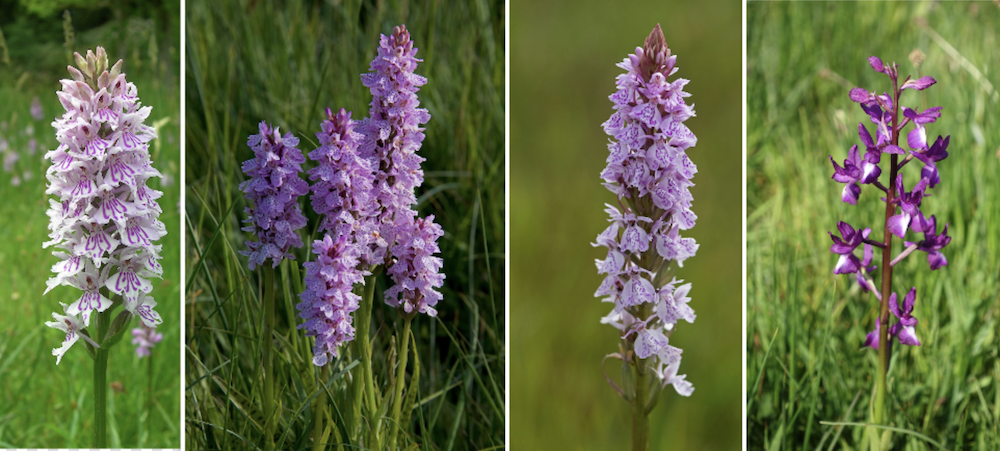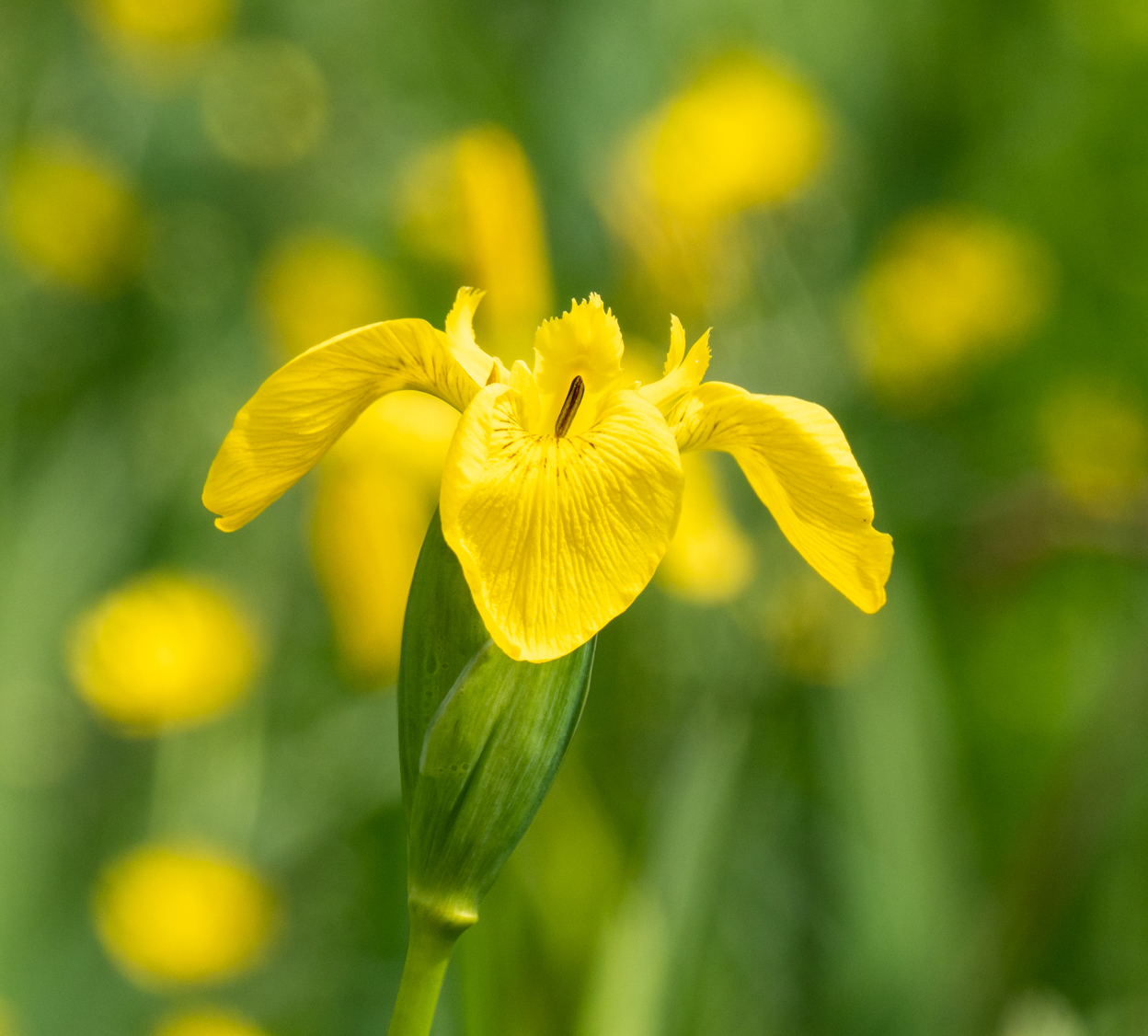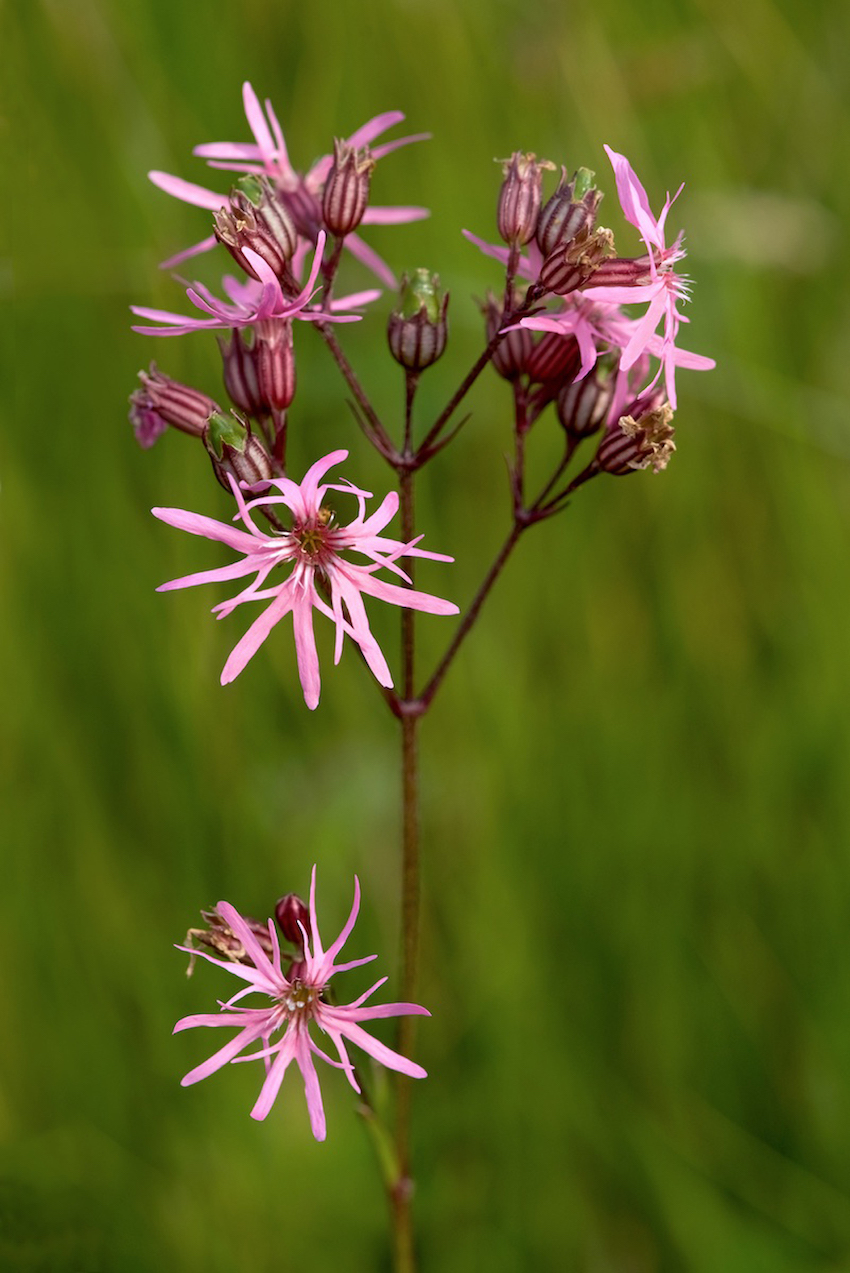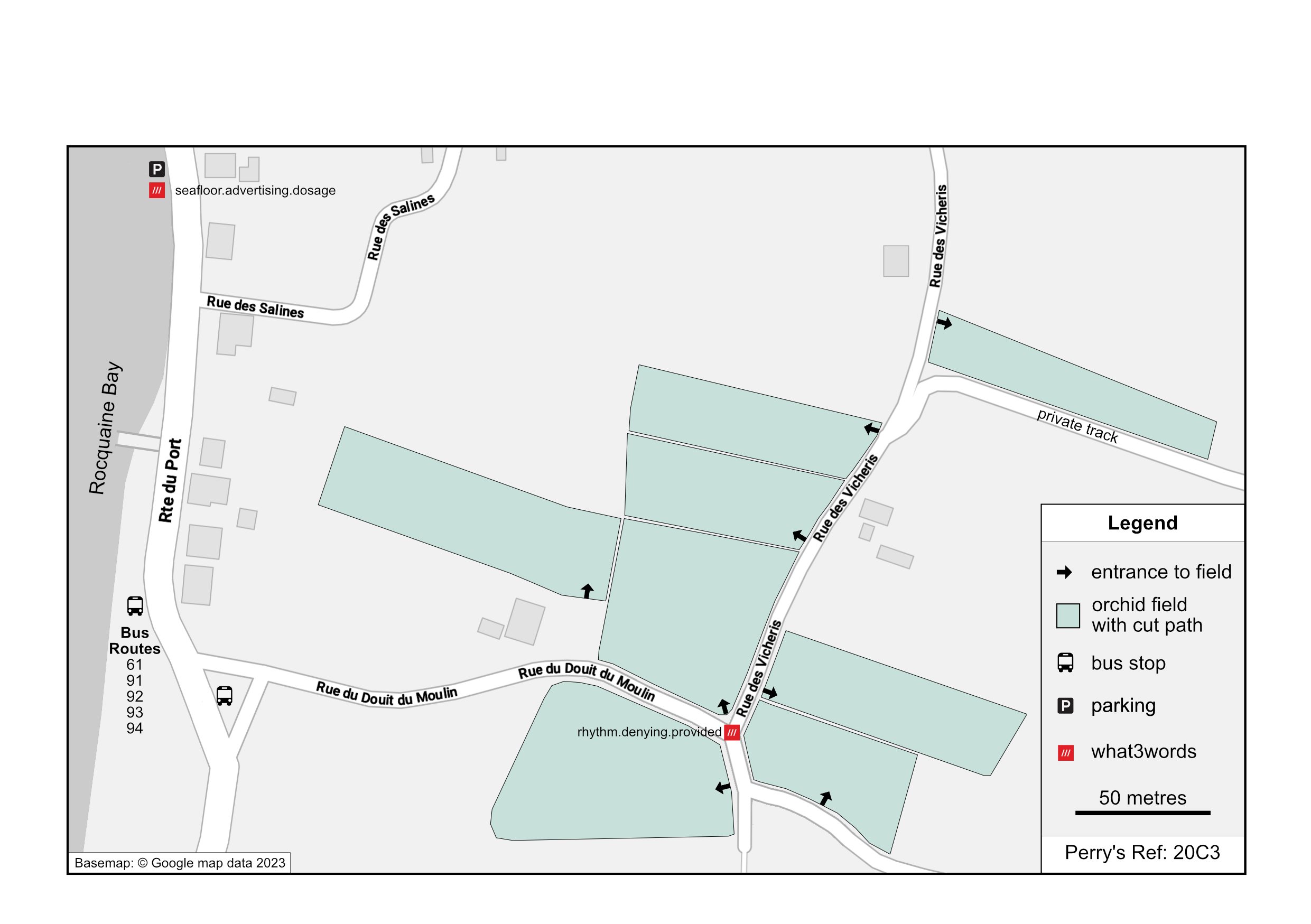


The Bridget Ozanne Orchid Fields are one of La Société Guernesiaise’s nature reserve sites. They are a group of predominantly wet-meadow fields which are managed traditionally. The hay is taken off in late July or early August and some are grazed by cattle in the autumn. Many species of wetland plants occur, including four types of orchids.
Three species are common in Europe the: Common Spotted-orchid which gets its name from its leaves, green with many purple, oval spots and is one of Europe’s commonest wild orchids; Heath Spotted-orchid which is similar to the common variety and the Southern Marsh-orchid.

Pictured (l-r): Common Spotted-orchid (Dactylorhiza fuchsii), Heath Spotted-orchid (Dactylorhiza maculata), Southern Marsh-orchid (Dactylorhiza praetermissa). All images: Anne Woodington. Loose-Flowered orchid (Anacamptis laxiflora) Image credit: Jean Dean.
All three are Dactylorhiza sp. and they can cross pollinate with each other producing hybrid plants that share characteristics from both species.
The fourth species is the Loose-flowered orchid which is easy to distinguish from the other three because as its name suggests, the flowers are less densely packed, it is not found in the UK but is widespread elsewhere in Europe.

Pictured: Yellow Flag iris. Image credit: Andy Marquis.
Other plants that can be observed include the large Yellow Flag Iris which is a bright sunshine yellow that stands out against the backdrop of the meadow and gets the name flag because its outer petals have a characteristic ‘droop’.
Also present are the delicate pink flowers of Ragged-robin which is a favourite source of nectar for bees and butterflies, Cuckooflower with its delicate pink flowers, so named because its blooms are thought to coincide with the arrival of the first Cuckoo – a sign that spring has arrived and the wonderfully aromatic Water Mint with dense clusters of lilac-pink flowers during July and August.

Pictured: Ragged Robin. Image credit: Anne Woodington.
The fields are a mecca for a variety of invertebrates including the Common-blue butterfly where males typically have wings that are blue above with a black-brown border and a white fringe and females are usually brown above with a blue dusting and orange spots.
Other insects include the distinctive Five-Spot Burnet moth with its black wings and five bright red spots, a large bristly fly called Tachina fera which is sometimes mistaken for a bee with its prominent broad black stripe down the centre of an otherwise orange abdomen, Common Lagoon Fly which is a hoverfly and the rhombic-shaped Leatherbug.

Pictured (l-r) Common Blue Butterfly, Five spot Burnet Moth, Large bristly fly, Tachina fera, Rhombic-shaped Leatherbug. Image credit: Andy Marquis.
Paths are cut around the fields to allow visitor access, but the ground can be quite marshy and uneven in places so sturdy footwear is advised.
Next time you are looking for something different to do, why not visit one of the La Société Guernesiaise nature reserves.
Information on location, bus routes and parking can be found HERE.

Pictured: Bridget Ozanne Orchid Fields where the green shaded areas show fields with cut paths to allow public access.
If you would like to support the work of maintaining the reserves then consider joining La Société Guernesiaise.
Annual membership is very reasonable, ranging from just £5 for a student to £34 for a family.
It has 9 different sections, and you can join as many as you like, if you are interested in local flora the Botany Section costs just £4.50 and if your passion is bugs then the Entomology Section is free to join. You will receive regular newsletters and details of upcoming events.
Comments
Comments on this story express the views of the commentator only, not Bailiwick Publishing. We are unable to guarantee the accuracy of any of those comments.